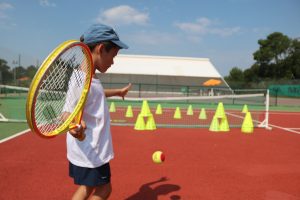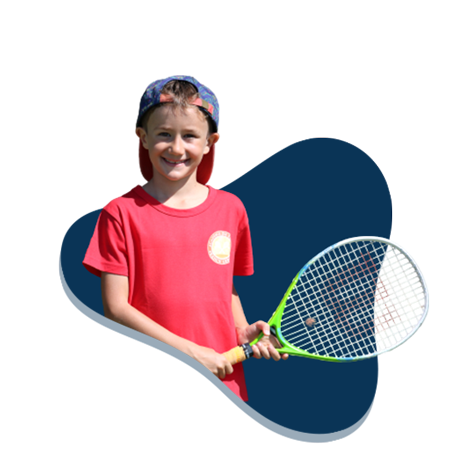Have you got a kid that wants to take tennis lessons, but you’re a bit unsure of where to start? Even if you’ve played tennis before or have a background in the sport, you probably have questions about the techniques and fundamentals your child is learning in their first few tennis lessons. Communicating with your child’s tennis coach during these early lessons is important, so we’ve added 3 guiding points to help you get an idea:

1. Proper Stance
There is not only one way to stand in tennis, and mastering varied stances is required to be a successful player.
Instructors might debate about which stance is best to teach first to kids at beginner level. The four common stances used in tennis are closed, squared, semi-open and open as pictured below. The modern approach to teaching tennis advocates a semi-open or open stance, but if your child’s instructor is older and learned by the traditional methods, they may choose to teach them a closed or squared stance to start. A main advantage for young children learning an open stance first is that their head is not turned allowing them to see the ball better. Teaching a more closed stance first can be effective in teaching beginners about rotating the shoulder and upper body.

Modern tennis stances for forehand and backhand in tennis.
Roger Federer is able to hit a great shot in any stance (even when off-balance or out of position). From left to right, you can see him setting up for a shot in a squared stance, a semi-open stance and a closed stance. After many tennis lessons, your child will eventually learn how and when to use each stance in match play.



2. Path of Swing
One of the common mistakes you’ll see in children who have not had proper tennis coaching is incorrect path of swing on their groundstrokes. You may see them hitting down on the ball or not following through correctly. A private tennis coach will generally teach beginner children the basics: hit low to high and finish the stroke across the shoulder. You may have seen some advanced junior players end their strokes closer to the hip or above their head, another aspect of modern tennis, but beginners should be learning to wrap their arm around their neck to elongate the stroke as shown in the photos below.

Andy Murray’s backhand over-the-shoulder finish

Maria Sharapova’s forehand over-the-shoulder finish
3. Various Grips
Similar to stance in tennis, there is no one right way to hold a tennis racket. Pictured below are the six most common grips, though it’s doubtful your child will be learning a one-handed backhand (figure 5) as the stroke is becoming obsolete in many teaching circles. The preferred forehand grip among most players today is the semi-western (figure 3), though the traditional forehand grip is the eastern (figure 2).

When I was a kid in the late ’90s, I started out using an eastern grip and then naturally moved to a semi-western as I learned to hit topspin on the ball. Again, depending if your child’s instructor adheres to modern or conventional teaching methods will determine which grip they will emphasize. On a two-handed backhand (figure 6), the dominant hand should mirror the forehand grip, while the non-dominate hand rests on top. It’s also important your child learns the continental grip (figure 1) for hitting volleys and serves. It’s probably the most challenging grip to teach children because it is not naturally comfortable to hit that way, but it is better to learn it now than have to unlearn an incorrect volley or serve grip later.


Don’t hesitate to ask your child’s tennis coach any questions you have about the techniques they’re learning each lesson. Having an interest in what your child is learning will allow you to take part in their tennis education and perhaps also enable you to practice with them outside of their private lessons!
At FLTA, our main focus is that the kids are HAVING FUN in a safe environment. Enjoying time on the tennis court should be your main priority for your child, as they’ll grow to love the sport and want to keep playing.







